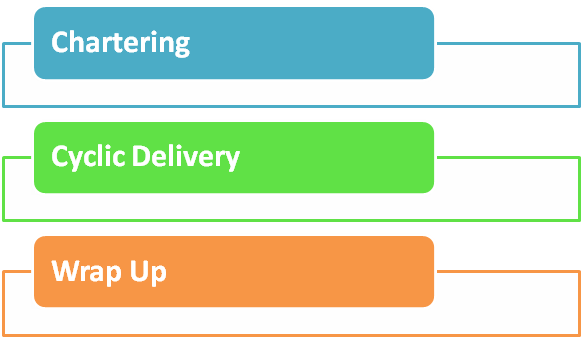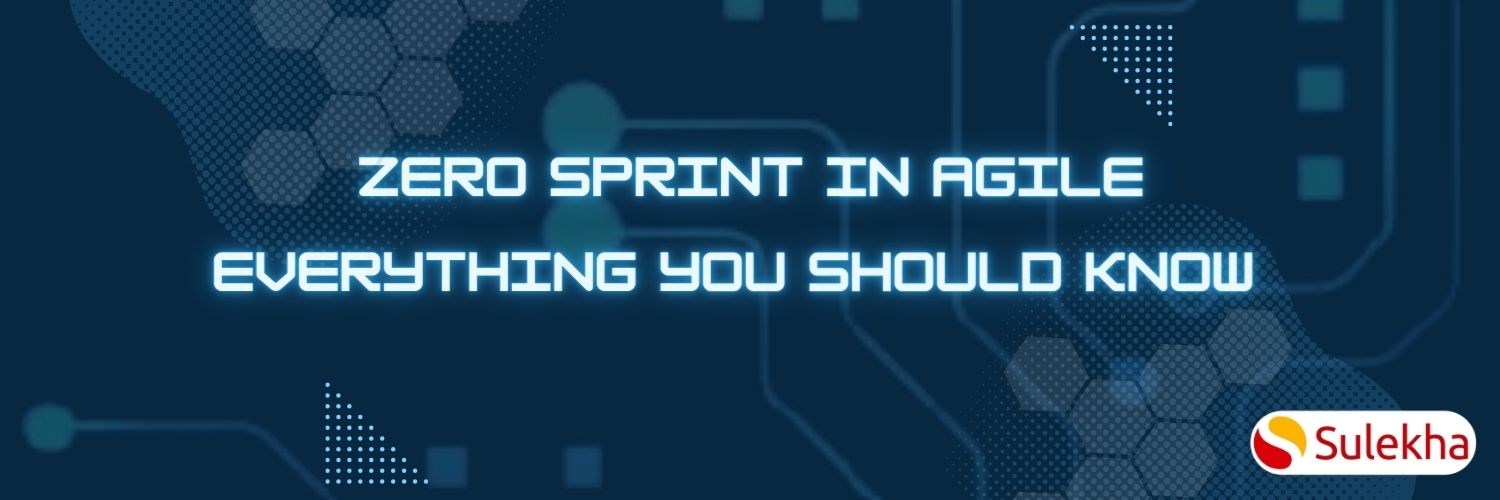Agile – The Latest Craze in the IT Industry
The Agile methodology promotes consistent repetition of the development and testing of the product throughout the life cycle of the software development of the project. The testing and development activities are concurrent. The solutions emerge through the collaboration between the cross-functional and self-organizing teams using the appropriate practices for their Agile Development. It is a term used for several incremental and iterative software development methods. Among the popular agile methodologies are Extreme Programming (XP), Crystal, Scrum, Lean Software Development, Dynamic Systems Development Method (DSDM), and Feature Driven Development (FDD).
Due to the rising demand of agile in the organizations, they are hiring agile developers in their companies with good salary. You can get a lucrative job as an Agile Developer with an Agile developer training program.
The Methodologies of Agile Testing Are As Follows:
#1. Scrum
This method concentrates on how to tackle tasks within the development environment of a team. The requirements for the product are tracked in details in the Product backlog. It is managed and prioritized by the product owner and distributed to the Scrum team, whose members can request for new requirement addition, deletion or modification. Scrum empowers development team and recommends working in small groups of 7-9 members. It comprises of three roles, such as:
- Scrum Master: He is responsible for setting up the team, preside over meetings and remove impediments to progress.
- Product owner: He creates the product backlog and prioritizes it and delivers the functionality at each iteration.
- Scrum Team: This team is responsible for completing the product life cycle.
#2. eXtreme Programming (XP)
This is a very useful method during constant changing requirements or demands from the customers or when there is no surety of the functionality of the system. It recommends frequent product releases in very short development cycles, which enhances system productivity and acts as a checkpoint, so that customer requirements can be incorporated. It targets the software keeping customers. It gathers all the business requirements as stories, which are stored in the parking lot. In this method, releases are based on short cycles, called iteration, with a period of 14 days. Each iteration involves phases like unit testing, coding and system testing, where some major or minor functionality are built into the application at each phase.
Phases of eXtreme Programming:
- Planning: This phase helps in the Identification of sponsors and stakeholders and infrastructure needs, collects information related to security and ensures the service level agreements, along with its conditions.
- Analysis: It involves the capturing and prioritizing of the Stories in the Parking lot, scrubbing of the stories for estimation, defining the iteration SPAN and enables in resource planning for the QA and development teams
- Design: It involves the breakup of tasks, preparation of test scenario for each of the tasks and establishing the regression automation framework.
- Execution: It involves coding, carrying out of manual test scenarios, Unit Testing, generation of defective report, transformation of the manual to the automation regression test cases, mid iteration review and end iteration review.
- Wrapping: It involves small releases, regression testing, developing new stories and process improvements.
- Closure: It includes the training, pilot and product launch, production support and reviewing the production support.
#3. Crystal Methodologies
This method is based on three concepts such as:

- Chartering: The activities of this phase include carrying out preliminary feasibility analysis and fine tuning this method of development.
- Cyclic Delivery: The development phase comprises of two delivery cycles that reviews the project plans and refines the release plans.
- Wrap Up: The activities here include the deployment in the user environment followed by reviews and reflections.
#4. Dynamic Software Development Method (DSDM)
This method employs the Time Boxing, Prototyping and Moscow Rules techniques and this method involves the active participation of users and teams are empowered to take decisions.
Phases of DSDM:
- Pre-project study
- Feasibility study
- Business study functional model
- Iteration design and build iteration
- Implementation post-project
#5. Feature Driven Development (FDD)
This method involves building and designing features and describes every short phase of the work that has to be completed per feature. Modeling of domain object, class ownership, inspections, regular builds, configuration management etc. have to be kept in mind during this phase.
The Phases of FDD:
- Domain Walkthrough
- Design Inspection
- romote To Build
- Code Inspection
- Design
#6. Lean Software Development
This method aims at augmenting the software development speed and minimizing cost and is based on the principle of “just in time production”.
The Phases of Lean Software Development:
- Eliminating waste
- Amplifying learning
- Defer commitment
- Early delivery
- Empowering the team
- Building integrity
- Optimize the whole
It is mandatory to have adequate knowledge of agile as it is now extensively used in many organizations. You can get a lucrative job in a reputed organization with an Agile and software development certification program.
Find a course provider to learn Agile
Java training | J2EE training | J2EE Jboss training | Apache JMeter trainingTake the next step towards your professional goals in Agile
Don't hesitate to talk with our course advisor right now
Receive a call
Contact NowMake a call
+1-732-338-7323Enroll for the next batch
Agile Certification Training
- Dec 10 2025
- Online
Agile Certification Training
- Dec 11 2025
- Online
Agile Certification Training
- Dec 12 2025
- Online
Related blogs on Agile to learn more

What is Zero Sprint in Agile? Everything You Should Know
In evolving technology, software development has seen drastic changes in the IT industry. As the demand for software development increases, utilization of various methodologies like Agile has become the global norm. So, the ever-growing demand for cu

Transformation to A More Flexible Software Architecture with Agile
The software architecture is the backbone of a system, in which the components of the system have a relationship with each other, as well as the environment and the principles guiding its design and evolution. The traditional, rigid waterfall archite

How To Take Your Career to New Heights As An Agile Developer
Agile Software Development is a term used for a group of practices and methods, based on the principles and values, expressed in Agile Manifesto. The solutions emerge through the collaboration between the cross-functional and self-organizing teams us
Latest blogs on technology to explore

From Student to AI Pro: What Does Prompt Engineering Entail and How Do You Start?
Explore the growing field of prompt engineering, a vital skill for AI enthusiasts. Learn how to craft optimized prompts for tools like ChatGPT and Gemini, and discover the career opportunities and skills needed to succeed in this fast-evolving indust

How Security Classification Guides Strengthen Data Protection in Modern Cybersecurity
A Security Classification Guide (SCG) defines data protection standards, ensuring sensitive information is handled securely across all levels. By outlining confidentiality, access controls, and declassification procedures, SCGs strengthen cybersecuri

Artificial Intelligence – A Growing Field of Study for Modern Learners
Artificial Intelligence is becoming a top study choice due to high job demand and future scope. This blog explains key subjects, career opportunities, and a simple AI study roadmap to help beginners start learning and build a strong career in the AI

Java in 2026: Why This ‘Old’ Language Is Still Your Golden Ticket to a Tech Career (And Where to Learn It!
Think Java is old news? Think again! 90% of Fortune 500 companies (yes, including Google, Amazon, and Netflix) run on Java (Oracle, 2025). From Android apps to banking systems, Java is the backbone of tech—and Sulekha IT Services is your fast track t

From Student to AI Pro: What Does Prompt Engineering Entail and How Do You Start?
Learn what prompt engineering is, why it matters, and how students and professionals can start mastering AI tools like ChatGPT, Gemini, and Copilot.

Cyber Security in 2025: The Golden Ticket to a Future-Proof Career
Cyber security jobs are growing 35% faster than any other tech field (U.S. Bureau of Labor Statistics, 2024)—and the average salary is $100,000+ per year! In a world where data breaches cost businesses $4.45 million on average (IBM, 2024), cyber secu

SAP SD in 2025: Your Ticket to a High-Flying IT Career
In the fast-paced world of IT and enterprise software, SAP SD (Sales and Distribution) is the secret sauce that keeps businesses running smoothly. Whether it’s managing customer orders, pricing, shipping, or billing, SAP SD is the backbone of sales o

SAP FICO in 2025: Salary, Jobs & How to Get Certified
AP FICO professionals earn $90,000–$130,000/year in the USA and Canada—and demand is skyrocketing! If you’re eyeing a future-proof IT career, SAP FICO (Financial Accounting & Controlling) is your golden ticket. But where do you start? Sulekha IT Serv

Train Like an AI Engineer: The Smartest Career Move You’ll Make This Year!
Why AI Engineering Is the Hottest Skillset Right Now From self-driving cars to chatbots that sound eerily human, Artificial Intelligence is no longer science fiction — it’s the backbone of modern tech. And guess what? Companies across the USA and Can

Confidence Intervals & Hypothesis Tests: The Data Science Path to Generalization
Learn how confidence intervals and hypothesis tests turn sample data into reliable population insights in data science. Understand CLT, p-values, and significance to generalize results, quantify uncertainty, and make evidence-based decisions.